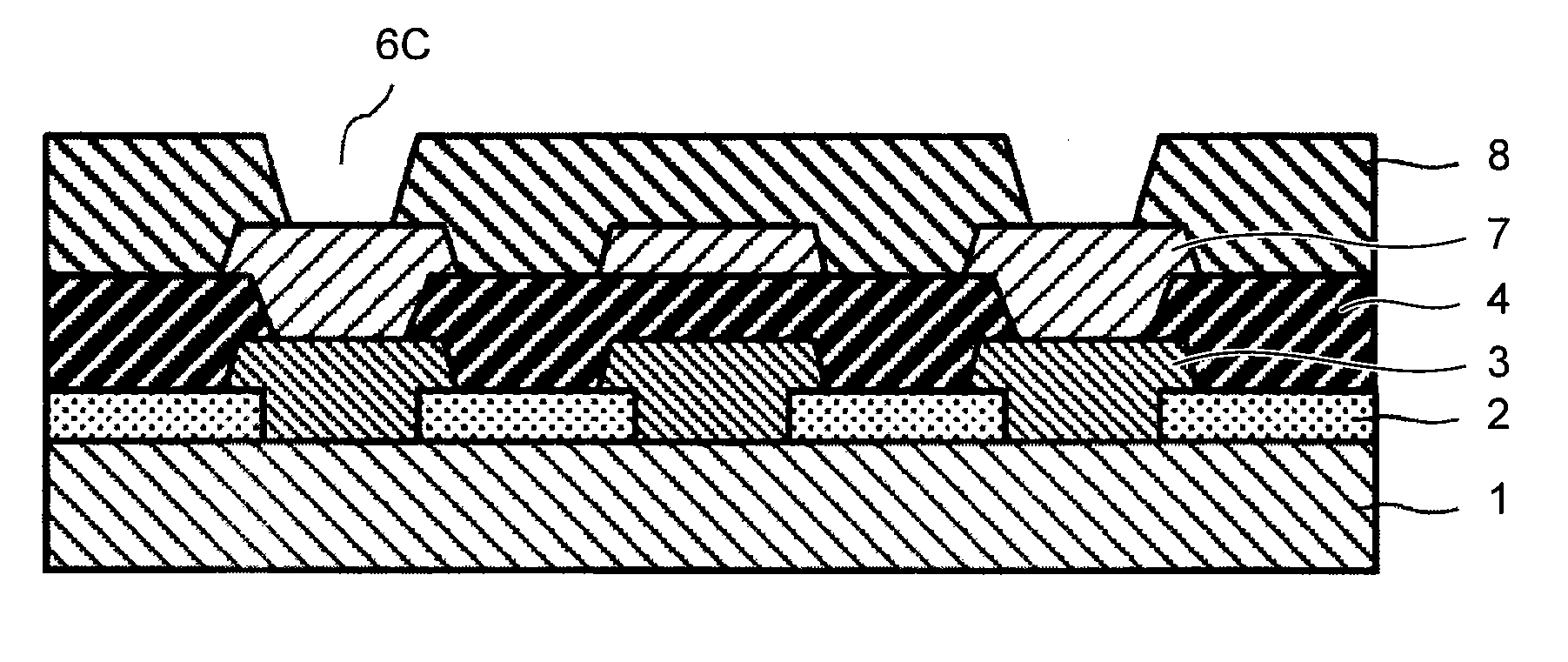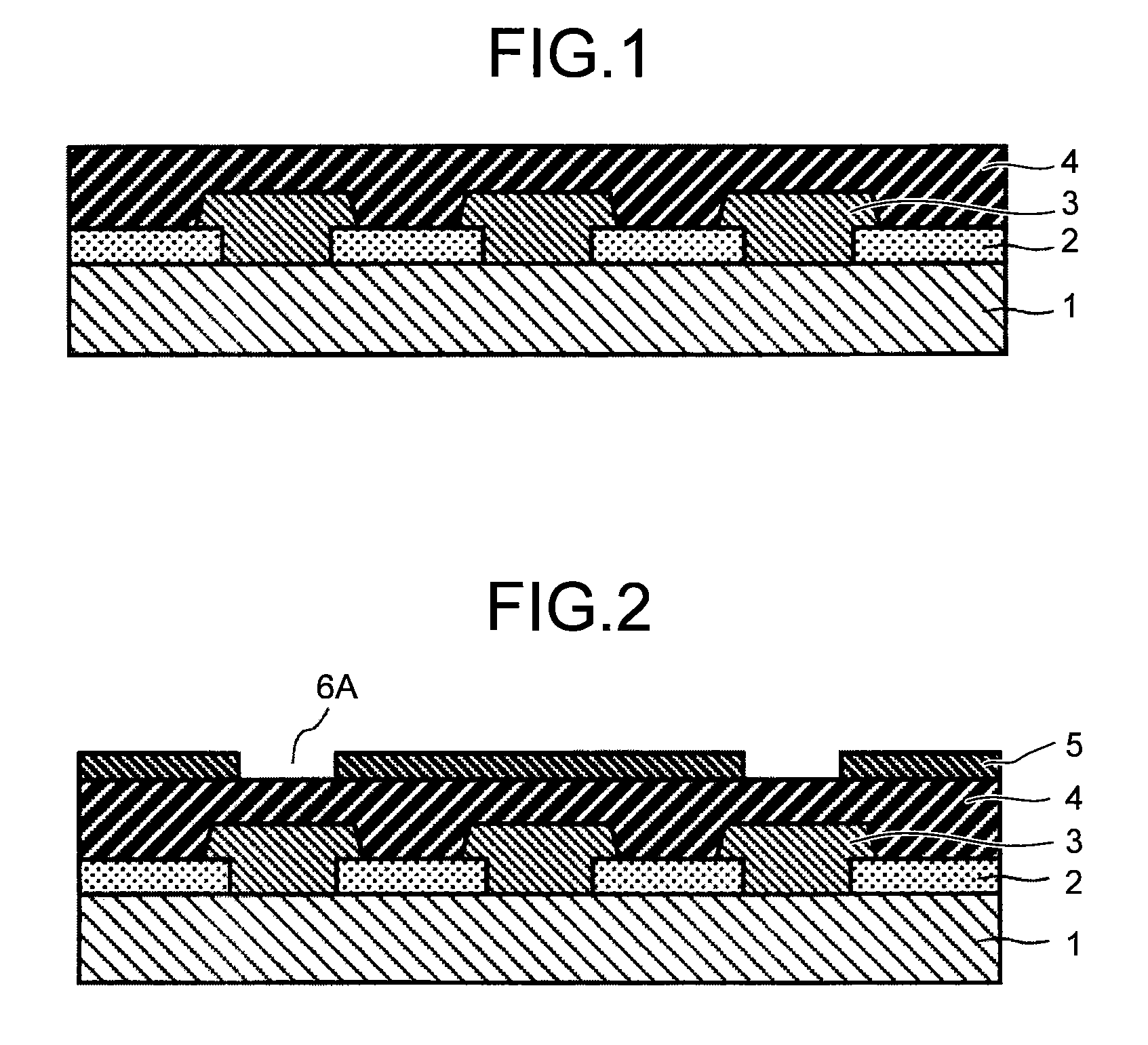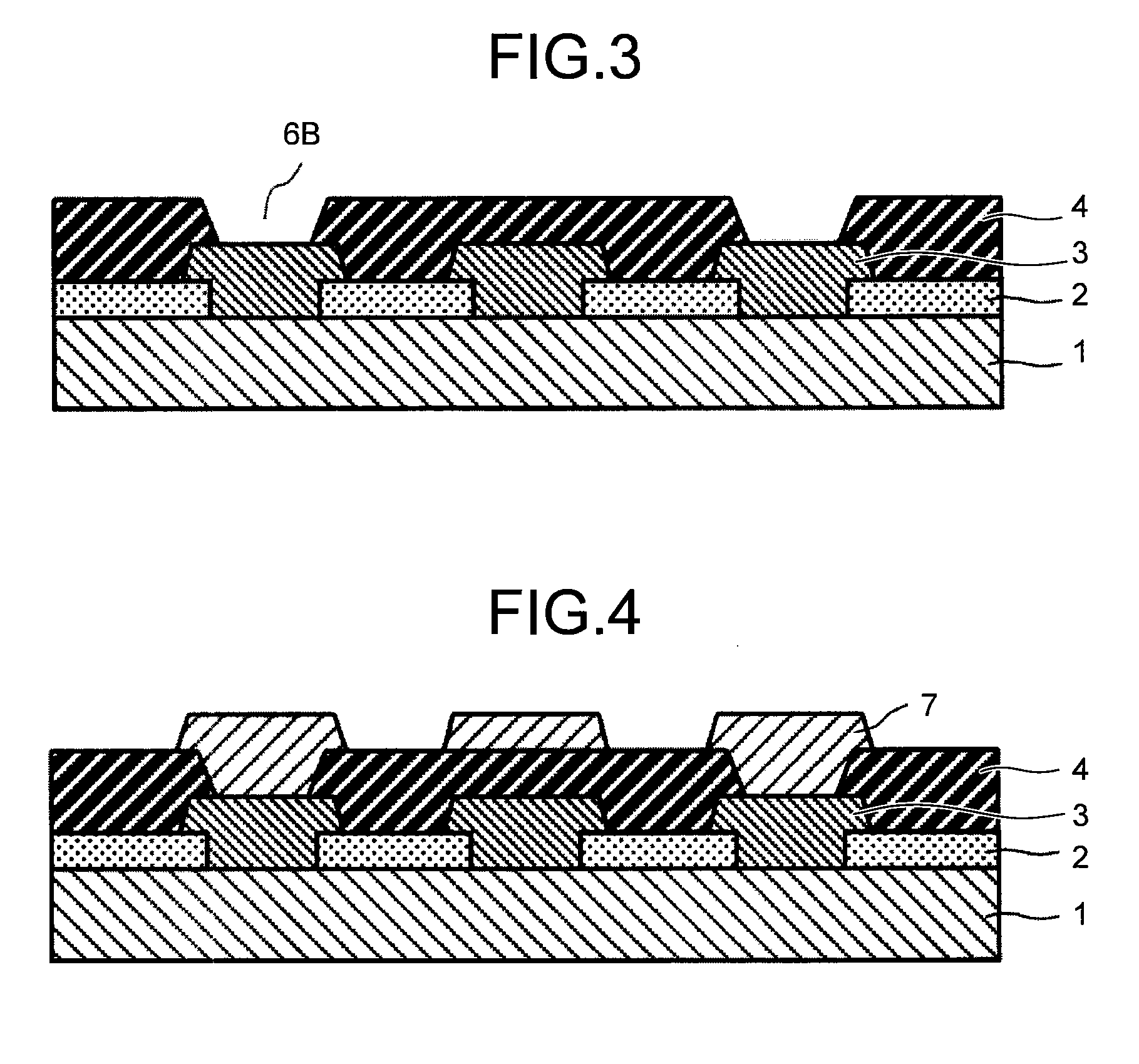Positive photosensitive resin composition, method for forming pattern, electronic component
a technology of photosensitive resin and composition, applied in the direction of photosensitive materials, instruments, photomechanical equipment, etc., can solve the problems of negative photosensitive polyimide not suitable for multi-purpose use, polyimide resolution problem, possible reduction of yield ratio upon production, etc., to achieve excellent heat resistance and mechanical properties, reduce the restriction of process, and improve the stability of the film after development
- Summary
- Abstract
- Description
- Claims
- Application Information
AI Technical Summary
Benefits of technology
Problems solved by technology
Method used
Image
Examples
examples
[0203]The present invention will be described more specifically hereinbelow with referring to Examples and Comparative Examples, but the present invention is not limited to these Examples. The weight average molecular weight of the polymer synthesized in Examples and Comparative Examples was obtained in terms of standard polystyrene using a gel permeation chromatography method (GPC method, the apparatus therefor was supplied from Hitachi Ltd., and a column was Gel Pac supplied from Hitachi Chemical Co., Ltd.).
examples 1 to 13
Synthesis Example 1
Synthesis of Polybenzoxazole Precursor
[0204]In a 0.5 liter flask equipped with a stirrer and a thermometer, 15.48 g (60 mmol) of 4,4′-diphenyl ether dicarboxylic acid and 90 g of N-methylpyrrolidone were placed. The flask was cooled to 5° C., and subsequently 23.9 g (120 mmol) of thionyl chloride was added dropwise. The mixture was reacted for 30 minutes to obtain a solution of 4,4′-diphenyl ether dicarboxylic acid chloride. Then, in a 0.5 liter flask equipped with a stirrer and a thermometer, 87.5 g of N-methylpyrrolidone was placed, into which 18.30 (50 mmol) of bis(3-amino-4-hydroxyphenyl)hexafluoropropane was dissolved with stirring. Subsequently 9.48 g (120 mmol) of pyridine was added. Then the solution of 4,4′-diphenyl ether dicarboxylic acid chloride was added dropwise over 30 minutes with keeping the temperature at 0 to 5° C., and then the stirring was continued for 30 minutes. The solution was poured into 3 liters of water. A precipitate was collected, wh...
synthesis example 2
[0205]In a 0.5 liter flask equipped with a stirrer and a thermometer, 15.48 g (60 mmol) of 4,4′-diphenyl ether dicarboxylic acid and 90 g of N-methylpyrrolidone were placed. The flask was cooled to 5° C., and subsequently 23.9 g (120 mmol) of thionyl chloride was added dropwise. The mixture was reacted for 30 minutes to obtain a solution of 4,4′-diphenyl ether dicarboxylic acid chloride. Then, in a 0.5 liter flask equipped with a stirrer and a thermometer, 87.5 g of N-methylpyrrolidone was placed. 18.30 (50 mmol) of bis(3-amino-4-hydroxyphenyl)hexafluoropropane and 2.46 g (20 mmol) of m-aminoanisole were added and dissolved therein with stirring. Subsequently 9.48 g (120 mmol) of pyridine was added. Then the solution of 4,4′-diphenyl ether dicarboxylic acid chloride was added dropwise over 30 minutes with keeping the temperature at 0 to 5° C., and then the stirring was continued for 30 minutes. The solution was poured into 3 liters of water, and a precipitate was collected, washed 3...
PUM
| Property | Measurement | Unit |
|---|---|---|
| temperature | aaaaa | aaaaa |
| temperature | aaaaa | aaaaa |
| temperature | aaaaa | aaaaa |
Abstract
Description
Claims
Application Information
 Login to View More
Login to View More - R&D
- Intellectual Property
- Life Sciences
- Materials
- Tech Scout
- Unparalleled Data Quality
- Higher Quality Content
- 60% Fewer Hallucinations
Browse by: Latest US Patents, China's latest patents, Technical Efficacy Thesaurus, Application Domain, Technology Topic, Popular Technical Reports.
© 2025 PatSnap. All rights reserved.Legal|Privacy policy|Modern Slavery Act Transparency Statement|Sitemap|About US| Contact US: help@patsnap.com



